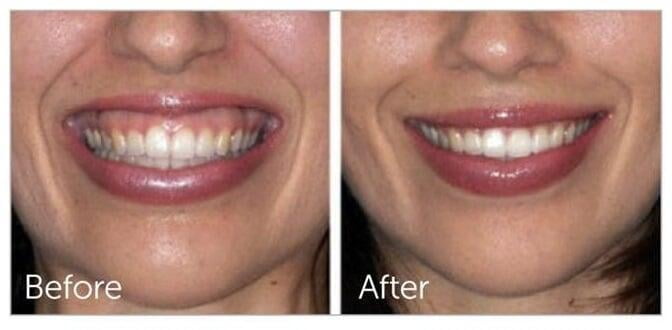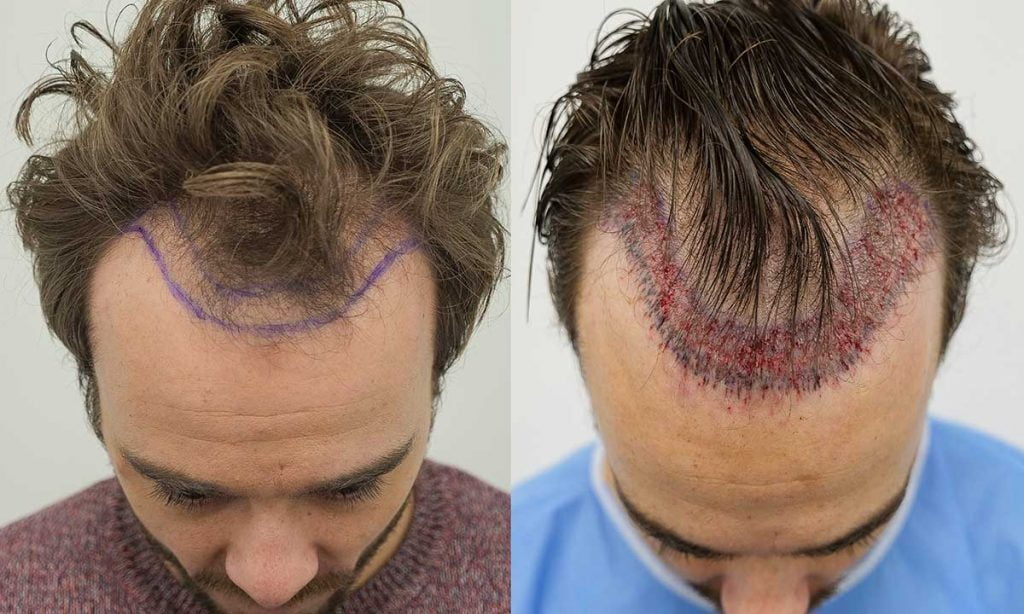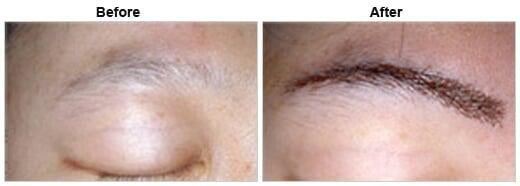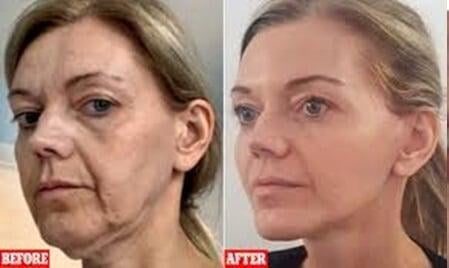BOTOX

Botox is a drug made from a toxin produced by the bacterium Clostridium botulinum. It's the same toxin that causes a life-threatening type of food poisoning called botulism. Botox injections are noted primarily for the ability to reduce the appearance of facial wrinkles. They're also used to treat conditions such as neck spasms (cervical dystonia), excessive sweating (hyperhidrosis), an overactive bladder and lazy eye. Botox injections may also help prevent chronic migraines. Botox Cosmetic is an injectable wrinkle muscle relaxer. It uses botulinum toxin type A, specifically OnabotulinumtoxinA, to temporarily paralyze muscle. This reduces the appearance of facial wrinkles. A Botox treatment is minimally invasive. The effects from Botox will last 3 to 6 months. As muscle action slowly returns, the lines and wrinkles begin to reappear and need to be treated again. The lines and wrinkles often appear less severe with time because the muscles are shrinking.
Botox derives from a bacterium called Clostridium botulinum. This bacterium is present in many natural settings, including soil, lakes, forests, and in the intestinal tracts of mammals and fish.Naturally occurring Clostridium botulinum bacteria and spores are generally harmless. Problems only arise when the spores transform and the cell population increases. At a certain point, the bacteria begin producing botulinum toxin, the deadly neurotoxin responsible for botulism. Botulinum toxin is extremely toxic. In fact, some scientists have estimated that 1 gram (g) of crystalline toxin could kill 1 million people and a couple of kilograms could kill every human on earth.
However, according to the American Osteopathic College of Dermatology, (AOCD), Botox is safe and has few side effects when used in a therapeutic context.
Manufacturers make Botox injections from very small doses of botulinum toxin. The drug can temporarily paralyze muscles, which can benefit a range of muscle- and nerve-related disorders.
Commercial versions of Botulinum toxin include:
- Botox (onabotulinumtoxin A)
- Dysport (abobotulinumtoxin A)
- Xeomin (incobotulinumtoxin A)
- Myobloc (rimabotulinumtoxin B)
People use the term Botox interchangeably for these various products, though “Botox” is the registered trademark of Allergan Inc.
Botox is a neurotoxin. These substances target the nervous system, disrupting the nerve signaling processes that stimulate muscle contraction. This is how the drug causes temporary muscle paralysis.
In order for muscles to contract, nerves release a chemical messenger called acetylcholine at the junction where the nerve endings meet muscle cells. Acetylcholine attaches to receptors on the muscle cells and causes the muscle cells to contract or shorten.
Botox injections prevent the release of acetylcholine, which stops muscle cells from contracting. The toxin reduces abnormal muscle contraction, allowing the muscles to become less stiff.
Filler
Injectable filler (injectable cosmetic filler, injectable facial filler) is a soft tissue filler injected into the skin at different depths to help fill in facial wrinkles, provide facial volume, and augment facial features: restoring a smoother appearance. Injectable wrinkle fillers can give you a more youthful look for a fraction of what a traditional facelift costs. Most will fill hollows, lines, and wrinkles in less than 30 minutes with results that can last from 4 months to more than a year.
Injectable wrinkle fillers, unlike Botox injections that relax the muscle under a wrinkle, fill the line, crease, or area with one of several different substances. As a result, trouble spots nearly disappear.
Wrinkle fillers can also be used as "volumizers," plumping and lifting cheeks, chins, jawlines, and temples; filling out thin lips, and plumping sagging hands.
The treatment is fast and easy. But all wrinkle fillers have a downside, including the risk of allergic reaction and the formation of tiny bumps under the skin. In some cases, those bumps may be permanent. And sometimes, a bluish skin discoloration known as the Tyndall effect happens. The color change can last for several months, but there are treatments available. In very rare cases, skin cells may die if the wrinkle fillers are not used properly. Typically, the wrinkle fillers that last longer are the ones more likely to cause side effects.
Not every wrinkle-filler is right for every type of wrinkle. The least risks and best results come from using the right one correctly.
Synthetic Wrinkle Fillers-
This smaller category of wrinkle fillers includes lab-made substances that are not related to anything found naturally in the skin.
All the fillers in this group have similar side effects, such as redness, swelling, or bruising at the site of the injection. Other side effects include nodules or bumps under the skin that can be seen and felt and that, in rare instances, may require surgery to remove.
The benefits include a longer-lasting effect. And at least one filler offers semi-permanent filling of lines and creases. Remember, products with longer-lasting effects are more likely to cause side effects. And when not used correctly, synthetic wrinkle fillers may cause disfigurement.

Hair Transplant
It's a type of surgery that moves hair you already have to fill an area with thin or no hair. Doctors have been doing these transplants in the U.S. since the 1950s, but techniques have changed a lot in recent years.You usually have the procedure in the doctor's office. First, the surgeon cleans your scalp and injects medicine to numb the back of your head. Your doctor will choose one of two methods for the transplant: follicular unit strip surgery (FUSS) or follicular unit extraction (FUE).With FUSS, the surgeon removes a 6- to 10-inch strip of skin from the back of your head. He sets it aside and sews the scalp closed. This area is immediately hidden by the hair around it.
Next, the surgeon’s team divides the strip of removed scalp into 500 to 2,000 tiny grafts, each with an individual hair or just a few hairs. The number and type of graft you get depends on your hair type, quality, color, and the size of the area where you’re getting the transplant.If you’re getting the FUE procedure, the surgeon’s team will shave the back of your scalp. Then, the doctor will remove hair follicles one by one from there. The area heals with small dots, which your existing hair will cover.
After that point, both procedures are the same. After he prepares the grafts, the surgeon cleans and numbs the area where the hair will go, creates holes or slits with a scalpel or needle, and delicately places each graft in one of the holes. He’ll probably get help from other team members to plant the grafts, too.Depending on the size of the transplant you’re getting, the process will take about 4 to 8 hours. You might need another procedure later on if you continue to lose hair or decide you want thicker hair.

EYEBROW TRANSPLANT
An eyebrow transplant is a cosmetic procedure where hair grafts (plugs) are transferred to your brow area. This goal is that new hairs will grow from these grafts, producing a fuller look.
The procedure
The actual procedure is similar to a traditional hair transplant.
Eyebrow hair grafts are taken from hairs above your ears. A surgeon transfers not just the individual hairs, but the hair follicles, too. This helps to ensure that new hairs are able to grow in your eyebrows once the initial transferred ones fall out.
After you’re given a general anesthetic, a surgeon will make small incisions at the follicle donor sites, as well as at the sites of transplantation in your brows. The entire process takes about 2 to 3 hours.
PROS AND CONS
Proponents of eyebrow hair transplants note that the new hairs look natural because they’re your own. The procedure may also limit the need for brow makeup.
However, there are also reported downsides to this procedure. For one, it’s costly. It can also take several months until the new follicles “take” so that you see full results. Finally, there’s a chance that these new follicles won’t produce new hairs.
RECOVERY PERIOD
The recovery period for an eyebrow transplant is relatively quick. You’ll notice some scabbing around the brows within the first few days. It’s important to not pick at these.
You may need to avoid vigorous exercise for up to 3 weeks following your surgery. Call your surgeon if you experience any bleeding, swelling, or pus at the site.
You’ll start to see the transplanted hairs fall out after a few weeks. This is completely normal. Your new brow hairs should start to grow over the next several months. In the meantime, you may need to trim the transplanted hairs to brow length.

Facelift (Rhytidectomy)
A face-lift (rhytidectomy) is a cosmetic surgical procedure to create a younger appearance in your face. The procedure can reduce the sagging or folds of skin on the cheeks and jawline and other changes in the shape of your face that occur with age.During a face-lift, a flap of skin on each side of the face is pulled back, and tissues below the skin are surgically altered to return the contour of the face to a more youthful shape. Before the flap is sutured closed, excess skin is removed. A neck lift (platysmaplasty) is often done as part of a face-lift to reduce fat deposits and sagging skin on the neck.
A face-lift won't decrease fine creases or wrinkles in your skin or damage from sun exposure. Other cosmetic procedures can address the appearance or quality of the skin itself. As you get older, the appearance and shape of your face is altered because of normal age-related changes. Your skin becomes less elastic and looser, and fat deposits decrease in some areas of your face and increase in others. Age-related changes in your face that may be reduced with a face-lift include the following:
· Sagging appearance of your cheeks
· Excess skin at your lower jawline (jowls)
· Deepening of the fold of skin from the side of your nose to the corner of your mouth
· Sagging skin and excess fat in the neck (if the procedure includes a neck lift)
A face-lift isn't a treatment for superficial wrinkles, sun damage, creases around the nose and upper lip, or irregularities in skin color.

